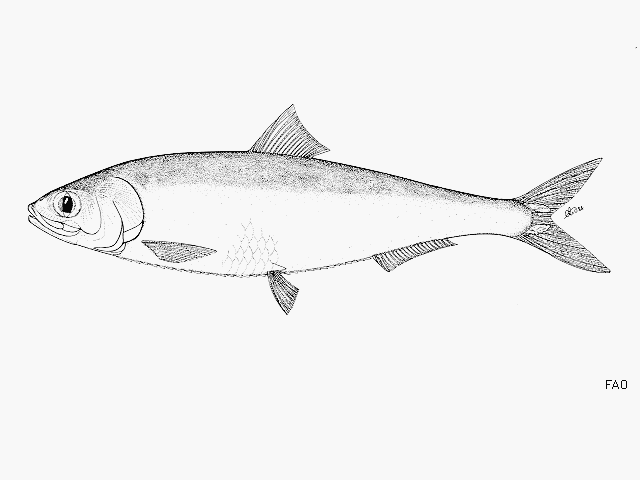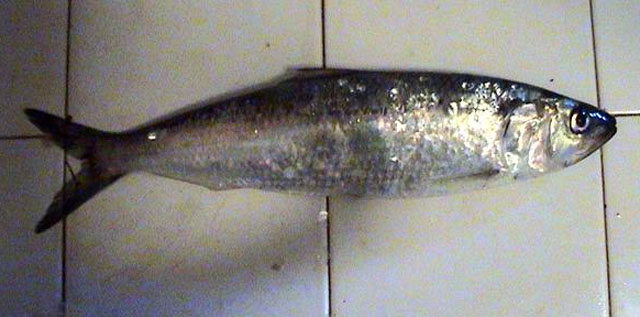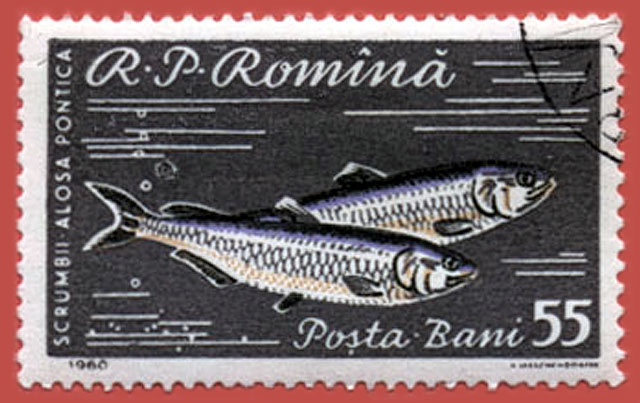Alosa immaculata Bennett, 1835
Description
Dorsal spines (total): 0; Anal spines: 0. Body fairly elongate, more `herring-like' than `shad-like'. Gill rakers rather thin, usually equal to or a little shorter than gill filaments. Teeth well developed in both jaws. Resembles A. caspia, which usually has more Gill rakers (50 to 180, much longer than gill filaments), poorly developed teeth and a deeper, `shad-like' body; A. maeotica has fewer Gill rakers (33 to 36).
Common Names
No common names available.
Taxonomic Hierarchy
Kingdom: Animalia
Phylum: Chordata
Class: Teleostei
Order: Clupeiformes
Family: Alosidae
Genus: Alosa
Species: Alosa immaculata Bennett, 1835
Climate Zone
Location
Biology
Thai species is pelagic at sea, in deep water. It migrates to middle reaches of large rivers, spawning where current is strongest, close to the surface, often at 2-3 m depth in the main channel. Migrates upriver to spawn at 3 years, rarely earlier and only a few individuals spawn two seasons. It appears along the coast in March to April, enters rivers when temperatures reach about 6-9°C, between late March and late April; migration usually peaks in May. Spawning starts when temperature rises above 15°C in April to August; usually between 1 and 8 p.m. Pelagic eggs. Spent individuals return to the sea to feed. Juveniles inhabit floodplain and shallow riverine habitats, migrate to the sea or estuarine habitats during first summer; in autumn return to the sea until maturity. When at sea, it feeds on a wide variety of zooplankton (mainly crustaceans, (Crangon, Upogebia, Idothea, gammarids) and small fish (Engraulis, Clupeonella, Sprattus). Reduction of spawning sites and migration routes are caused by impoundment of main rivers. Heavy over fishing apparently reduced all populations during the first decade of the 20th century (Ref. 59043). Reaches a smaller size (30 cm SL, usually 14-18) in Don River; a smaller form reaches only 21 cm.
Habitat
freshwater



